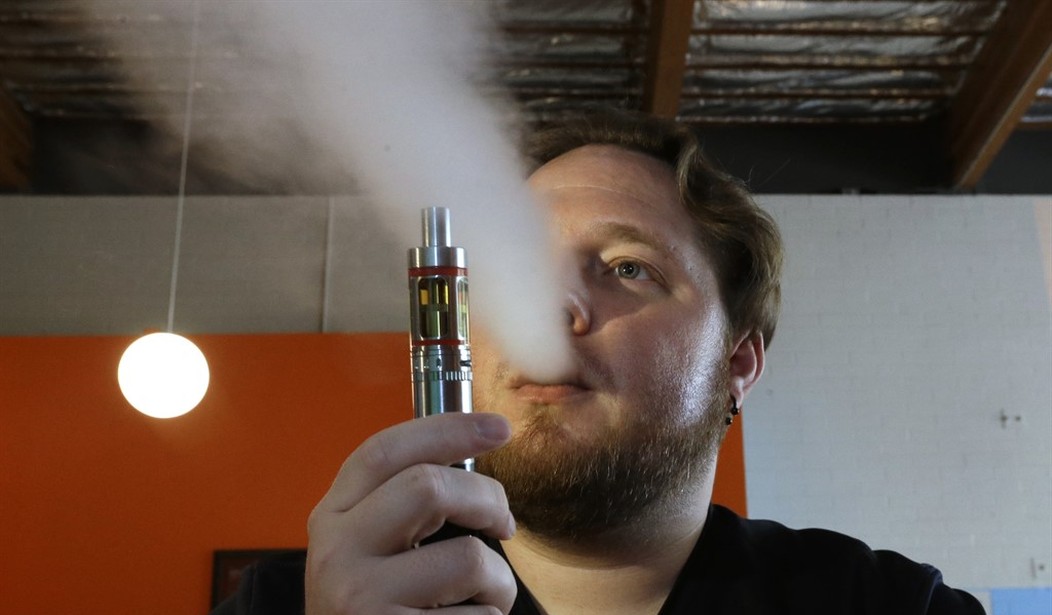The Centers for Disease Control and Prevention (CDC) recently updated its Behavioral Risk Factor Surveillance Systems (BRFSS) survey. The annual survey measures various lifestyle indicators among adults aged 18 and over including demographics (including age and race), dietary and physical activities, substance use, combustible cigarette, and vapor product use.
In 2022 (according to the BRFSS), 7.7 percent of U.S. adults were currently using e-cigarettes amounting to nearly 20.1 million adults vaping that year. This is a 15 percent increase from 2021 when 6.7 percent of adults vaped and amounts to more than 2.7 million additional adult vapers in 2022 than in 2021.
Conversely, adult use of combustible cigarettes continues to decline. According to the BRFSS, 14 percent of adults were currently smoking in 2022– or 36.5 million adults. This was a 2.8 percent decline from 2021’s 14.4 percent and represents more than 810,000 fewer adults smoking in 2022 than in 2021.
These are some impressive numbers which are long overdue as the media and public health continues to impose an alarmism campaign of misinformation on safer alternatives to cigarettes.
There is overwhelming evidence that e-cigarettes are used by adults who either are currently smoking and/or have formerly smoked.
In 2021, according to a 2023 Morbidity and Mortality Weekly Report(MMWR) from the CDC, among U.S. adults who were currently using e-cigarettes, nearly 70 percent reported either currently smoking (29.4 percent) and/or having ever smoked (40.3 percent). In 2018, it was estimated of the nearly 10 million American adult vapers, three million had previously consumed combustible tobacco.
Despite these increases, federal agencies are continuing to stoke alarmism and overhype youth use of e-cigarettes while denying adults access to a regulated marketplace.
The CDC recently published a series of videos targeted towards educators to talk to their students about vaping. While most of the videos are full of the standard anecdotes (youth’s developing brain being particularly vulnerable), there are a few truisms. For example, the CDC recommends educators let their students know that vaping is not as common as students may think.
Recommended
According to the CDC’s Youth Risk Behavior Survey (YRBS), which biennially tracks students’ behaviors like the BRFSS, youth vaping peaked in 2019 and has significantly declined in the years since.
In 2019, 50.1 percent of U.S. high school students reported having ever-tried an e-cigarette, while 32.7 percent reported current use, or having used the product on at least one occasion in the 30 days prior to the survey. In 2021, 36.2 percent of U.S high schoolers reported ever-trying e-cigarettes and 18 percent were currently vaping. And, while the 2.7 million high schoolers who were currently using e-cigarettes is a cause for some concern, it should not outweigh the 17.4 million adults who were currently vaping in 2021 – many of them to remain smoke-free.
In the face of continued misinformation being spun by federal agencies, scientific data overwhelmingly indicate that e-cigarettes are effective tools in helping adults quit smoking and maintain smoking cessation. In fact, the latest systematic scientific review of e-cigarettes has “found the strongest evidence that e-cigarettes … help people to quit smoking better than traditional nicotine replacement therapies, such as patches and chewing gums.”
Even more alarming, state legislation that seeks to ban the sale of flavored e-cigarettes correlates with increases in smoking rates.
Since at least 2019, lawmakers in Hawaii have been attempting to ban flavored tobacco and vapor products, and this year was no different. Yet, in the Aloha State, among all adults, smoking rates increased by 22.7 percent from 10.1 percent of adults smoking in 2021 to 12.4 percent smoking in 2022. While the percentage of adults aged 18 to 24 years old who were smoking decreased by 56.5 percent during the same period (a record low three percent of Hawaiian young adults smoked in 2022), smoking rates among 25- to 34-year-olds and 35- to 44-year-olds increased by 25.2 percent and 16.1 percent, respectively, between 2021 and 2022.
Between 2021 and 2022, smoking rates increased among all adults in California, New Mexico, and Oregon – all of which have tried to ban flavored vapes or has enacted a ban since at least 2018.
In addition to constant threats of prohibitionist policies, the 20-plus million adults who were currently using e-cigarettes in 2022 are also being ignored by the U.S. Food and Drug Administration (FDA), which continues to lag on authorizing those same adults access to regulated e-cigarette products.
To date, the FDA has authorized only 23 e-cigarette products, while issuing denial orders for hundreds of millions. Of the FDA-authorized products, all are only available in tobacco flavors – despite overwhelming evidence adults enjoy and rely on flavors.
The FDA continues to hammer down on youth use of e-cigarettes as a reason for denying the authorization of flavors. Yet, the agency ignores CDC data that indicates adults are using e-cigarettes and they are using non-FDA authorized flavored products.
A June 2023 CDC MMWR examined e-cigarette sales using Universal Product Code sales and found that between January 2020 and December 2022, e-cigarette unit sales increased by 46.6 percent. The report found that tobacco-flavored sales decreased while other flavors increased. Given the increase in adult vaping found by the CDC’s BRFSS, it is apparent that adults e-cigarette users are using non-tobacco flavored vapor products.
More than 20 million adults vaping is impressive – especially as it correlates with overall declines in adult smoking rates. While data is still too early, it is becoming more evident that e-cigarettes help decrease smoking rates. It’s time for federal agencies to listen to these tens of millions of adults.
Lindsey Stroud is Director of the Taxpayers Protection Alliance’s Consumer Center.



















Join the conversation as a VIP Member